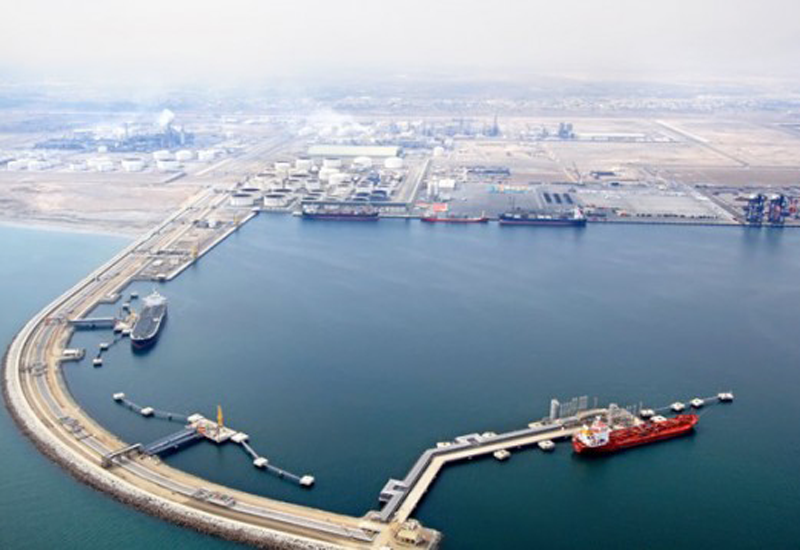Rising competition from high sulfur fuel oil suppliers at the nearby Sharjah port of Khor Fakkan increasingly attracts buyers’ interests, at the expense of demand at the UAE’s bunker hub of Fujairah, according to local traders.
Steady inflows of Russian-origin HSFO barrels, in and around the Fujairah belt, is likely to have elevated inventories but also created an uneven playing field for suppliers distancing themselves from Russian cargoes, traders said.
“With more supply options [at Khor Fakkan], HSFO premiums have fallen due to overcapacity and a few accounts have recently proven more challenging to trade with [amid the competition],” a Fujairah-based trader said.
March’s HSFO bunker sales declined sharply to a record low of 81,058 cu m, 49.3% below the previous month and 37.3% down on the year, reversing the surge to all-time highs earlier in February since Fujairah Oil Industry Zone began providing the data to S&P Global Commodity Insights in 2021.
With competitors at Khor Fakkan more focused on HSFO than on low sulfur fuel oil refueling operations, shifts in HSFO demand are relatively more pronounced compared to other grades, traders said.
“Some suppliers are highly competitive and were able to sell [delivered HSFO bunker] at flat to a maximum of $5/mt premiums,” a Fujairah-based bunker supplier said April 27.
The Platts Fujairah-delivered 380 CST high sulfur fuel oil bunker premium over the FO 380 CST 3.5% FOB Arab Gulf cargo assessments softened to average $28.06/mt since the beginning of Q2 2023, from $42.54/mt across whole of Q1 2023, according to data by S&P Global.
In comparison, Fujairah’s HSFO bunker premiums averaged at $92.46/mt during Q2 2022, the data showed.
Fortunately for some Fujairah’s sellers, which also provide refueling alternatives at Khor Fakkan port, players with long-term delivered contracts saw a smaller drop in market share and were less impacted than spot sellers, according to the Fujairah-based trader.
Meanwhile, the number of bunker barges plying along Khor Fakkan and Fujairah was up as much as an estimated 50% as of March compared to six months prior, as suppliers expand their fleet in an effort to capture a larger share of the market, UAE-based traders said.
However, the fleet of available barges for bunker supply could fluctuate significantly on a monthly basis too, traders added.
Cargo inflows buoy stockpiles
HSFO inventories are likely to remain adequate for the downstream market amid the availability of these sanctioned barrels, as traders also expect HSFO cargo flows toward the Far East region to slow in the near term amid busier stocking activity ahead of peak summer demand for the Middle Eastern utility sector.
“[HSFO] players with Russian cargoes are offering very low levels, so others are not able to follow [their pricing]. Even ex-wharf cargoes sold by terminals were traded at higher premiums [than their offers on delivered basis],” the bunker supplier said.
Term contractual supply of ex-wharf 380 CST high sulfur fuel oil at the UAE’s bunker hub of Fujairah for balance of April loading dates were most recently concluded at premiums of $9-$15/mt to Platts FOB Arab Gulf 180 CST HSFO cargo assessments, below the $10-$18/mt done for March-loading cargoes, S&P Global previously reported quoting local traders.
Primarily, these barrels are reportedly stored onboard floating storage units positioned near Khor Fakkan and loaded on to bunker barges via ship-to-ship transfers, according to market sources.
“Even though specifications of these fuel oil barrels should be excellent, origins and compliance are potential issues,” a second Fujairah-based fuel oil trader said.
A cargo comprising of 628,314 barrels, or 98,947 mt, of HSFO loaded from Russia’s St. Petersburg and Ust Luga oil terminal is scheduled to discharge at the UAE on May 5, according to latest data by Kpler.
Most recently, another shipment totaling 429,902 barrels, 67,701 mt, of HSFO originating from the Russian port of Taman was discharged around Fujairah on April 17 too, Kpler data showed.
Some shipping companies also tend to steer clear of these bunker fuel alternatives to avoid potential compliance risk, the fuel oil trader added.
Since H2 April, 480,950 barrels, or 75,740 mt, of HSFO from Iran landed at Fujairah port on April 26, while a total of 1.934 million barrels, or 304,655 mt, of HSFO also sourced from Iran was discharged around Fujairah across H1 April, according to Kpler data.
Source: Hellenic Shipping News






